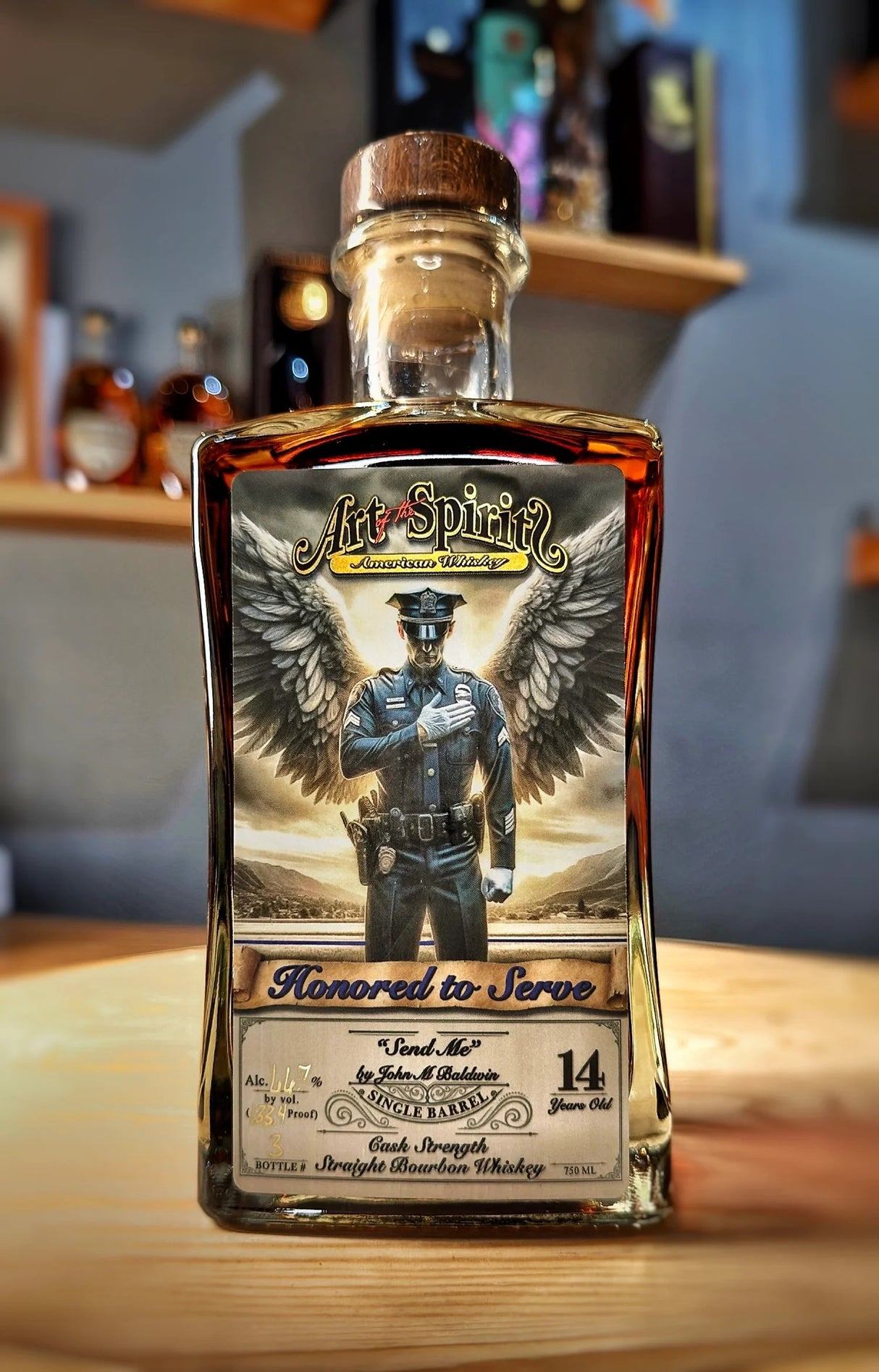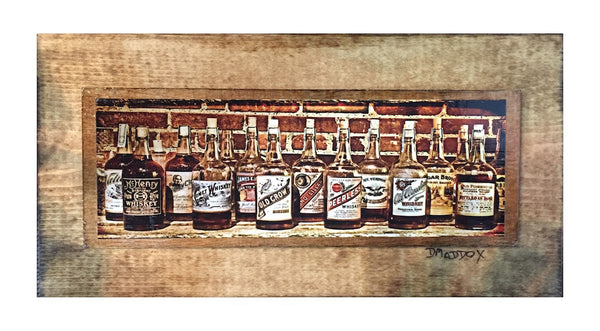Whiskey Art as a Statement: How It Enhances Home Décor
The Value of Whiskey Art in Celebrating Heritage and Craftsmanship in the Beverage Industry
The intricate connection in between whiskey art and the party of heritage and craftsmanship within the beverage industry can not be overemphasized. With thoughtfully developed containers and tags, bourbon brands envelop their historic roots and the artisanal skills that specify their manufacturing approaches. This imaginative dimension not only enhances market charm but also offers as an avenue for cultural narration, fostering a much deeper connection in between the craft and the consumer. As we explore the different aspects of this subject, appealing concerns regarding the influence of contemporary patterns on conventional methods develop, motivating further evaluation.
The Historical Roots of Whiskey
At the heart of scotch's allure exists a rich tapestry of historical origins that map back to ancient worlds. The origins of whiskey can be linked to the purification techniques of the Sumerians and Babylonians around 2000 BCE, where early forms of fermented grain drinks started to emerge. It was in the Center Ages that the art of distillation developed significantly, particularly in Ireland and Scotland, leading to the production of bourbon as we know it today.
The term "whiskey" itself stems from the Gaelic word "uisce beatha," indicating "water of life." This expression emphasizes the social value of scotch in Celtic cultures, where it was commonly connected with routines, events, and communal bonding. By the 15th century, distillation became an acknowledged craft within monastic areas, leading the means for the establishment of lawful distilleries.
As profession paths broadened, scotch's popularity expanded, going beyond regional borders and recording the interest of connoisseurs worldwide. Realism Art. This historical trip mirrors not just the workmanship behind scotch production but additionally its indispensable duty in cultural and social contexts, marking it as a significant beverage throughout background
Artistic Expression in Branding
Bourbon branding stands as an engaging intersection of virtuosity and commerce, where aesthetic identification plays a crucial role in forming customer perception. The aesthetic appeals of bourbon labels, product packaging, and advertising products show not only the brand name's story but also its core values and heritage. With artistic expression, distilleries share a narrative that resonates with customers, evoking emotions and sparking links.
The use of shade, typography, and imagery in branding offers to separate products in a saturated market. Standard themes might stimulate a sense of credibility and workmanship, while modern-day layouts can indicate technology and forward-thinking. This strategic creative instructions enhances brand name acknowledgment and loyalty, enabling consumers to create a personal connection with the whiskey they select.
Additionally, artistic expression in branding frequently functions as an event of regional heritage. Distilleries often include local icons or historical referrals right into their layouts, developing a local color that invites consumers to engage in a broader social experience. Inevitably, the artistry behind bourbon branding not just enhances aesthetic charm but also improves the total story of the brand name, fostering a much deeper appreciation for the workmanship and heritage ingrained in each bottle.
Craftsmanship in Bottle Style
The virtuosity obvious in bourbon branding expands past visual identification to encompass the craftsmanship associated with container design. Each bottle functions as a vessel not just for the spirit within, however likewise for the story it outlines its beginning, tradition, and top quality. The layout process requires thorough focus to information, as aspects such as product, closure, and form contribute significantly to the overall assumption of the whiskey.
Craftsmanship in bottle layout involves choosing high-grade glass that can enhance the bourbon's color and clarity, while additionally giving a responsive experience for the customer. The silhouette of the bottle should be both cosmetically appealing and practical, often showing the heritage of the brand name. Several distilleries go with distinct forms or printed logos that evoke a sense of authenticity and history.
Additionally, the label layout and typography play a critical duty in connecting the brand name's story. Bourbon Art. A well-crafted bottle not just mesmerizes the customer's eye however also reinforces the brand name's commitment to top quality and practice. By doing this, the craftsmanship of bottle style becomes an important element of the whiskey experience, combining artistry with a profound regard for heritage
Social Importance of Bourbon Art
Celebrating custom and craftsmanship, the cultural value of bourbon art transcends simple looks, intertwining with the historical and social narratives of the regions from which it stems. Each bottle acts as a canvas, depicting the special tales, folklore, and practices that have shaped regional whiskey-making methods. The intricate designs frequently mirror the heritage of the distillers, integrating symbols and motifs that resonate with the society and values of their neighborhoods.

On top of that, scotch art plays a crucial role in common celebrations and events, functioning as a concrete web link between people and their shared experiences. By valuing the artistry in scotch product packaging, customers grow a much deeper understanding and respect for the craft, eventually enriching their pleasure of the beverage itself.
Modern Trends in Whiskey Discussion
Recently, the presentation of whiskey has progressed to reflect modern preferences and fads while still honoring traditional craftsmanship - Realism Art. Distilleries are increasingly concentrating on aesthetic aspects that boost the total alcohol consumption experience, connecting the gap in between heritage and modernity
Innovative container styles have actually arised, often including sustainable products and imaginative tags that inform engaging stories. Lots of brands now team up with neighborhood artists, infusing their products with one-of-a-kind aesthetic expressions that resonate with customers. Additionally, limited-edition launches are typically packaged in collectible containers, adding value and allure for lovers.

Conclusion
In conclusion, bourbon art offers as an important conduit for expressing the heritage and craftsmanship inherent in the drink sector. Via elaborate branding, ingenious container designs, and culturally considerable creative components, whiskey brands successfully honor their traditions and get in touch with customers. This artistic story not just raises the admiration of bourbon but likewise enhances community identity and pride amongst producers. Eventually, bourbon art plays a vital duty in preserving and commemorating the abundant cultural tapestry of whiskey-making.


Workmanship in bottle design includes selecting high-grade glass that can improve the whiskey's shade and clarity, while likewise providing a responsive experience for the consumer. In this way, the workmanship of bottle design comes to be an important element of the scotch experience, combining artistry with an extensive pop over here regard for heritage.
In verdict, whiskey art serves as an important conduit for expressing the heritage and craftsmanship inherent in the drink sector.